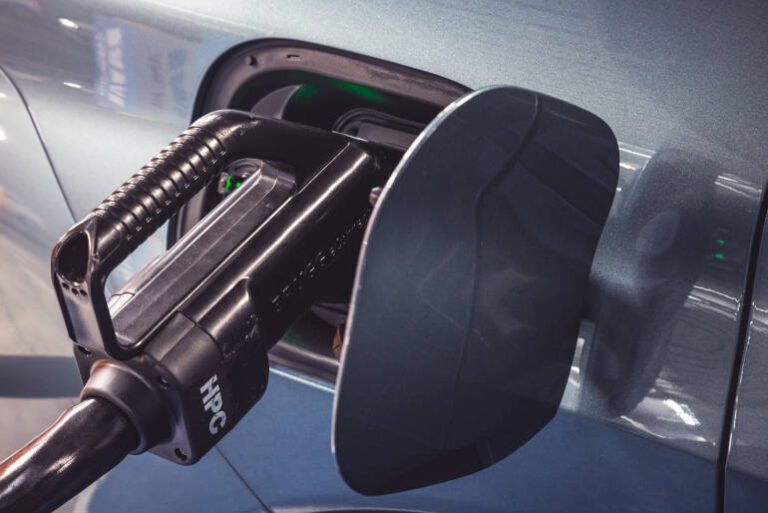Australia’s commercial fleets are falling behind on the road to net-zero, with a new report exposing a growing gap between corporate climate commitments and real-world action on fleet electrification.
The report, Electrifying Australia’s Fleets: Closing the Say-Do Gap, developed by OC&C Strategy Consultants with data from Carloop and Fifth Quadrant, paints a stark picture: although nearly 60% of ASX200 companies have set net-zero targets, fewer than 20% have clear plans to transition their fleets to electric vehicles (EVs). Meanwhile, EVs account for less than 5% of fleet purchases and under 1% of the national fleet car parc.
For Fleet Managers, Sustainability Officers, and Finance teams, the message is clear—despite strong intent, the actual transition to zero-emission vehicles (ZEVs) remains slow and fragmented, threatening the sector’s ability to meet 2030 and 2050 emissions targets.
Fleets: The Missing Link in Transport Emissions
Commercial fleets are responsible for around two-thirds of ground vehicle emissions and roughly 15–20% of Australia’s total net emissions. Business purchases account for 48% of annual new vehicle sales, with light and medium commercial vehicles (LCVs and MCVs) dominating corporate operations.
The report identifies three sectors—mining, logistics, and manufacturing—as the best-positioned industries to lead the charge. Together, they account for approximately 70% of fleet emissions, with around half of those emissions being addressable using today’s or near-future EV technologies.
Fleet Managers Expect Change—but Aren’t Ready
While more than 70% of Fleet Managers believe EVs will be mainstream by 2030, most are still in early exploratory stages. As the report states, “The lack of specific targets is translating to limited uptake.” Some large corporates are even stepping back from previously announced targets, reflecting wider global trends of delayed decarbonisation initiatives.
The analysis draws attention to an emerging ‘say-do’ gap: organisations talk about net-zero ambitions but have not translated these into operational fleet plans.
Five Key Barriers to EV Adoption
The report identifies five core challenges facing organisations trying to transition to EVs:
- Stakeholder Misalignment
The “Four Body Problem”—where Fleet Managers, ESG leaders, Facilities Managers, and Energy Managers all have different priorities—creates internal roadblocks to decision-making. - Lack of Fit-for-Purpose Vehicles
Despite growth in EV models, few meet the operational requirements for payload, range, and productivity in commercial settings. - Charging Infrastructure Limitations
Depot and en-route charging solutions remain costly and complex, especially for regional operations or high-utilisation fleets. - Finance and TCO Uncertainty
Higher upfront costs, residual value risks, and a lack of secondary markets make fleet financing for EVs harder than for ICE vehicles. - Underdeveloped Aftermarket Services
Long repair times, a shortage of certified EV technicians, and lack of parts availability increase downtime and diminish productivity.
Four Strategic Initiatives for Fleet Electrification
Despite these challenges, the report outlines a practical roadmap for closing the say-do gap through low-capital, low-risk actions:
- Use Data to Scope the Transition
Integrated fleet management platforms and telematics can help identify where EVs make sense today, streamlining pilot programs and investment. - Build Cross-Functional Collaboration
Organisations need EV transition strategies with governance structures that include all relevant stakeholders—from Fleet Managers to Sustainability and Finance teams. - Start Small with Partners and Pilots
Piloting small-scale deployments with OEMs, fleet management organisations (FMOs), and charging providers helps de-risk the transition and build internal confidence. - Monetise Charging Infrastructure
Turning charging depots into energy assets—with solar, battery storage, and smart-charging—can create new revenue streams and reduce reliance on grid upgrades.
Global Case Studies: Innovation in Action
The report highlights successful international projects that offer lessons for Australian fleet stakeholders:
- Geotab x SBB.AG (Switzerland):
Telematics used to evaluate EV readiness across 100 vehicles. - Fuso eCanter x Yamamoto x Ample (Japan):
Battery-swapping trials enabling 5-minute refuelling for last-mile logistics. - UPS x Moixa x UK Power Networks (UK):
Smart charging software optimises 170 electric vans using real-time energy data.
Opportunities for the Broader Ecosystem
The transition doesn’t rest solely on Fleet Managers. The report calls on:
- OEMs to fast-track fit-for-purpose models, co-design pilot programs, and improve supply chain transparency.
- Financiers and Insurers to innovate with mileage-based policies, battery-specific coverage, and residual value guarantees.
- Charging Providers to offer integrated ‘charging-as-a-service’ bundles.
- Utilities and Retailers to support depot upgrades and incentivise flexible tariffs.
Final Word: Fleet Electrification Needs Action Now
The message for Australian fleets is urgent. While momentum is building and the right technologies are emerging, delayed action today will make emissions targets impossible to meet.
As the report concludes:
“The road ahead is winding, and there will be speedbumps. But the destination is worth working for.”
For Fleet Managers and Sustainability leaders alike, now is the time to shift from ambition to execution. Closing the say-do gap could unlock one of the fastest, most impactful levers in the transport sector’s decarbonisation journey.






